Inside the classroom: Women and the Economy analyzes gender roles, economics of marriage


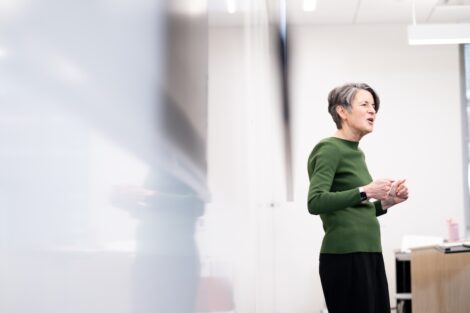
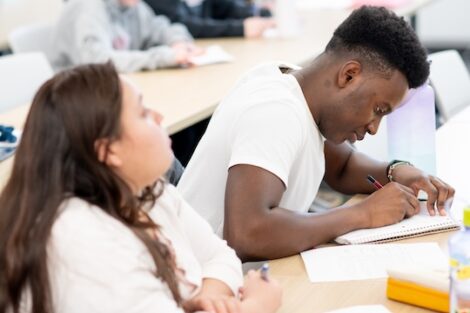
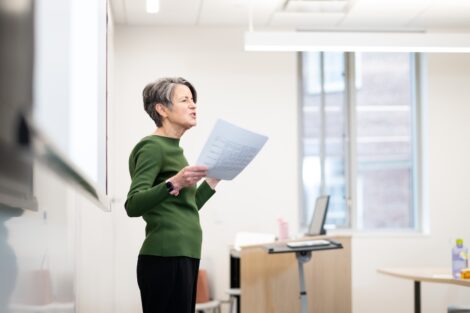


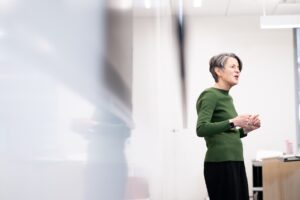

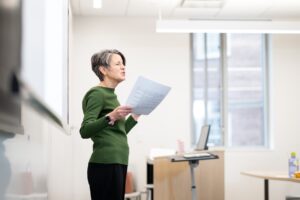
Inside the classroom is a new series offering a glimpse into classes at Lafayette, the talented professors who teach them, and how they impact and define a student’s experience.
By Kelly Huth

Prof. Susan Averett has taught ECON 325 nearly every semester for 20 years.
Back in 1900, fewer than 5 percent of married women worked outside the home; today, over half do. The stat jumps out on the syllabus of ECON 325: Women and the Economy.
“We start by looking at general data of how women’s lives have changed since 1960, but then we go into the meaning of gender, gender roles, and their origins and effects on women’s lives,” says Susan Averett, Charles A. Dana Professor of Economics. The class delves into the economics of marriage and fertility, women in the workforce, and the gender wage gap. “We come full circle as we see how those gender roles inform the rest of women’s economic lives.”
The course is an upper division economics elective taken mostly by junior and senior economics majors (and non-majors who have the prerequisites). It’s been a favorite at Lafayette, taught nearly every semester for the last 20 years.
Averett not only designed the course from scratch—she wrote the book on the subject. “Women and the Economy: Family, Work, and Pay” (which Averett co-authored with Saul D. Hoffman and Laura M. Argys) is now in its fifth edition. The course encourages students to consider how marriage and fertility impact (and are impacted by) the economy.

“This class is interesting, applicable, engaging, and challenging. You’ll use economic modeling, data, and research to understand real-world problems in hopes of improving them for women of the future, which is extremely inspiring.” – Mia Putzi ’26 (Photo by Adam Atkinson)
“…These very personal decisions they’re going to make will affect their economic future, and are also affected by the economy itself,” Averett says.
Before the class students may not have considered how marriage rates have fallen or how low the fertility rate is in the U.S. and they certainly don’t think of how economics plays into it, she says. Women and the Economy 325 encourages students to think critically by studying data and economic models. Students make weekly newscasts connecting coverage in the popular press to coursework. In class they often work in small groups to analyze economic models.
“Many students tell me they never thought about the economics of marriage.”
Mia Putzi ‘26 took the class in spring 2024, and liked it so much she convinced two of her lacrosse teammates to register. Putzi says the course ties in macro- and microeconomics, and econometrics with real-life and understandable examples.
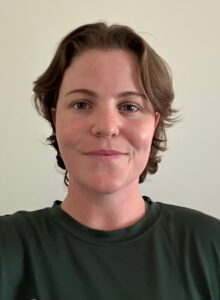
“This course is incredibly relevant for anyone interested in economics, public policy, or social justice. It challenges traditional economic assumptions and provides a lens to critically assess gender disparities in the workforce and beyond.” – Reilly Hughes ’23 (Courtesy Photo)
“As a woman who plans to enter the workforce, get married, and start a family one day, learning about these concepts stemmed outside the classroom in real life, and I will hold onto them,” Putzi says.
Averett says plenty of male students enjoy the course as well. “They have plenty of reasons to be interested in this topic because anything that happens with women’s economic lives is going to affect them. They have mothers, sisters, grandparents, aunts, and friends who identify as women who are affected by these things.”
Reilly Hughes ’23 says it was her favorite course at Lafayette, even inspiring her senior honors thesis. “This class helped me develop strong data analysis skills and a more nuanced understanding of policy impacts on gender equity,” Hughes says.
“Even now (in medical school), I find myself constantly referencing ideas from this course,” Hughes says. “Understanding how economic structures shape access to care, employment opportunities, and overall well-being has given me a unique perspective as I move into medicine.”

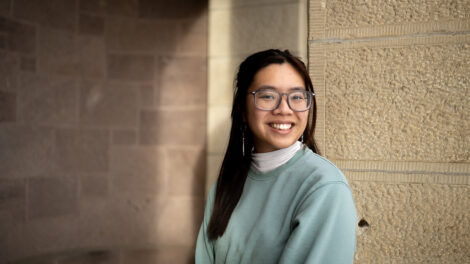
1 Comment
I absolutely loved this class with Professor Averett when I took it in 2015. It shifted how I think about the world and led me to study gender in international development for my masters. I still use some of the principles in my career!
Comments are closed.